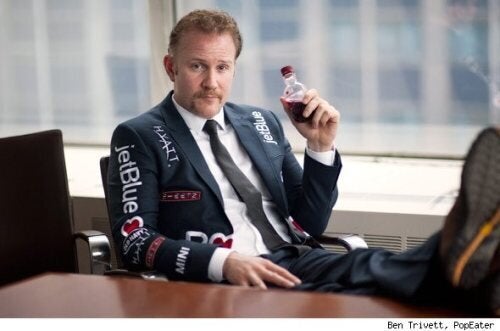In the 2011 satirical documentary about product integration, director Morgan Spurlock asks Consumer Advocate, Ralph Nader, where he should go to completely avoid commercials, Nader replies succinctly: "TO SLEEP." As you look around the world you live in and observe the amount of advertising that is bombarded your way left and right, it is difficult to disagree with Nader.

Far from the simple good ol' days where advertising was limited to the 30 second time slots on television and radio as well as newspaper ads; the modern web of consumerism is more intricate and complex than it has ever been before.
In a process called co-promotion, different brands team up with blockbuster films in order to promote both the movie and the products sponsoring the movie leading to a widespread increase in product visibility and eventually higher purchasing figures. This is an essential part of the modern machine that is capitalism.
In 2010, the Award winning film, the Social Network, contained around 50 product placements, one of the highest ever recorded. Throughout the film you see Sony products amongst others scattered around the shot. The film even attempts in one scene to underplay competing products. In the scene where the character Eduardo angrily walks up to Zuckerberg to confront him, he grabs his Apple Macbook and smashes it against the table immediately sending a subconscious message; Macs break easily.
Another more memorable instance of product endorsement is in the 2000 movie, Cast Away starring Tom Hanks who "befriends" a Wilson basketball and is seen in one of the final scenes yelling "Wilson" as he loses the ball in the ocean. In this case the product was literally a character.
Reality TV is ripe with product sponsors. One of the most watched shows on television, American Idol has had a record of 577 product placements in 2011.
If you are looking at the process of product placement through the creator's lens you must consider the impact this ends up having on the creative end result. Does having a financial sponsor compromise the creative process? More importantly, does it compromise its integrity?
There is another even more significant side to the issue at hand: that is the consumers, those that take in both the creative project as well as the advertising hitched to its wagon. So much integrated advertising in media is basically turning the whole experience of entertainment and even news into one long commercial. The products are forced into the story line in less subtle ways more often than not.
Other possibly more optimized and more fruitful ways of advertising are right in front of you. Social media websites such as Facebook tailor ads according to your own searches and interests. It's a bit disheartening actually to check your email and be greeted by a column advertising low budget rooms in London for instance (because you may have mentioned traveling to London in an email).
Finally, it comes down to this: Is product placement and co-promotion just the natural way in which marketing has evolved? Should it be accepted as an unavoidable eventuality? Or is it a plague invading people's psyches that needs to be halted immediately?
In the city of Sao Paulo, government officials passed a bill banning all outdoor advertising. As you walk through the streets of the largest city in Brazil you will not encounter any sort of advertising blatantly begging you to buy their product. While that seems like a plausible solution; it may be nearly impossible to implement in a world so accustomed to advertising. Most of the world's basic economic processes are precariously balanced on this interlacing web of cross-promotion.